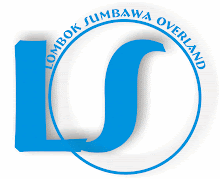 |
| Lombok & Sumbawa island |
southeast. It is in the province of West Nusa Tenggara.Sumbawa is 15,448 km² (three times the size of Lombok) with a population of around 1.5 million. It marks the
boundary between the islands to the west, which were influenced by religion and culture spreading from India, and the region to the east that was not so influenced.
Sumbawa has historically had two major linguistic groups who spoke languages that were unintelligible to each other. One group centered in the western side of the island
speaks Basa Samawa (Indonesian: Bahasa Sumbawa) which is similar to the Sasak language from Lombok; the second group in the east speaks Nggahi Mbojo (Bahasa
Bima). The kingdoms located in Sumbawa Besar and Bima were the two focal points of Sumbawa. This division of the island into two parts remains today; Sumbawa
Besar and Bima are the two largest towns on the island, and are the centers of distinct cultural groups that share the island. The official estimate of population as at 2005
was 1,219,590.
Sumbawa lies within the Pacific Ring of Fire. It is a volcanic island, including Mount Tambora (8°14’41”S, 117°59’35”E) which exploded in 1815, the most destructive
volcanic eruption in modern history (roughly four times larger than the 1883 eruption of Krakatoa, between Java and Sumatra, in terms of volume of magma ejected). The
eruption killed as many as 72,000. It also apparently destroyed a small culture of Southeast Asian affinity, known to archaeologists as the Tamboran kingdom. It launched
100 cubic kilometers of ash into the upper atmosphere, which caused 1816 to be the "year without a summer."
References^ Jong Boers, B.D. de (2007), ‘The ‘Arab’ of the Indonesian Archipelago: The Famed Horse Breeds of Sumbawa’ in: Greg Bankoff and Sandra Swart (eds),
Breeds of Empire: The ‘invention’ of the horse in Southern Africa and Maritime Southeast Asia, 1500-1950. Copenhagen: NIAS Press, pp 51-64^ Jong Boers, B.D. de
(1997), ‘Sustainability and time perspective in natural resource management: The exploitation of sappan trees in the forests of Sumbawa, Indonesia (1500-1875)’, in: Peter
Boomgaard, Freek Colombijn en David Henley (eds), Paper landscapes; Explorations in the environmental history of Indonesia. Leiden: KITLV Press, pp. 260-281




























Post a Comment